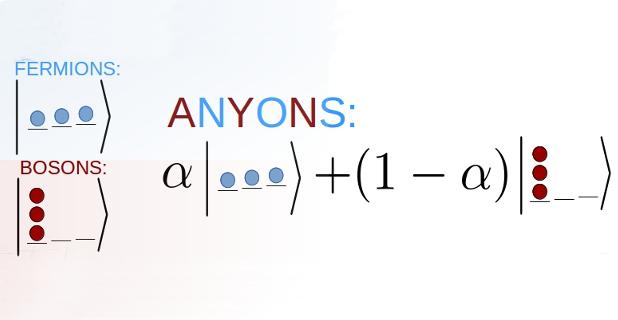
Credit: ICFO
While in a three-dimensional world, all particles must be either fermions or bosons, it is known that in fewer dimensions, the existence of particles with intermediate quantum statistics, known as anyons, is possible. Such fascinating objects are strongly believed to exist as emerging quasiparticles in fractional quantum Hall systems, but despite great efforts, experimental evidence of anyons has remained very limited. Since quantum statistics is defined through the behavior of the phase of the wave function, when two identical particles are exchanged, early attempts of anyon detection have been based on interferometric measurements using Fabry-Perot interferometry or beamsplitter experiments.
So far, there have been many efforts to improve the experimental evidence of anyons by searching for ways to study the FQH effect and understand its underlying physics in highly controllable quantum systems such as cold atoms or photonic quantum simulators. There are studies that have shown that light-matter interactions can create and trap fractional quasiparticles in atomic gases or electronic systems and measure, through time-of-light imaging, signatures of fractional statistics carried by the total angular momentum of a fractional quantum Hall system.
In a recent study published in Physical Review Letters, ICFO researchers Tobias Grass, Niccolo Baldelli, and Utso Bhattacharya, led by ICREA Prof. at ICFO Maciej Lewenstein, and in collaboration with Bruno Julia-Díaz, from the University of Barcelona, describe a new approach towards anyon detection, which is a crucial element for increasing our knowledge of exotic quantum matter.
Contrary to earlier detection schemes, the study authored by the researchers opens up a new possibility which requires neither particle exchange nor interferometry. Instead, the authors suggest to trace the behavior of the anyons by binding impurity particles to them. Specifically, the average angular momentum of a single impurity is shown to take characteristic values that are possibly fractional. For a system of multiple impurities, the total angular momentum should then depend on how these effective single-impurity levels are filled. Strikingly, the value obtained by the authors corresponds neither to the filling of a Fermi sea nor to the condensation of a bosonic mode. Instead, the impurity angular momentum interpolates between these limiting cases, and the fractional statistical parameter of the anyons can be straightaway inferred from this interpolation.
Their detection scheme only requires density measurements and might be applicable to Abelian quantum Hall phases in electronic materials as well as in photonic or atomic quantum simulators. The authors discuss also possible generalizations towards non-Abelian anyons. Since the impurities realize a non-interacting gas of anyons, their work also poses the possibility of studying the intricate thermodynamics of anyonic systems.
###
Media Contact
Alina Hirschmann
[email protected]
Related Journal Article
http://dx.




